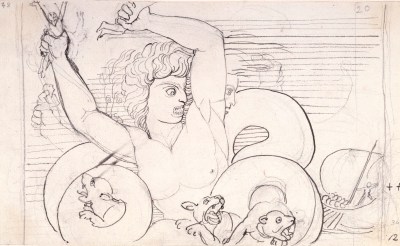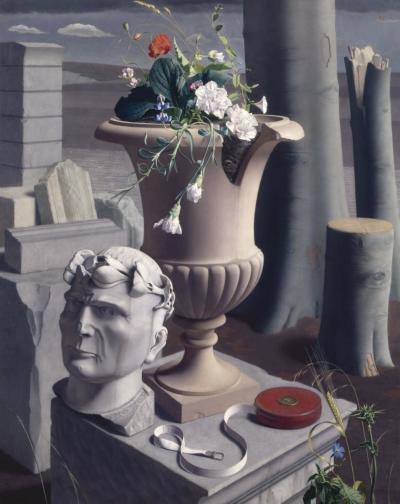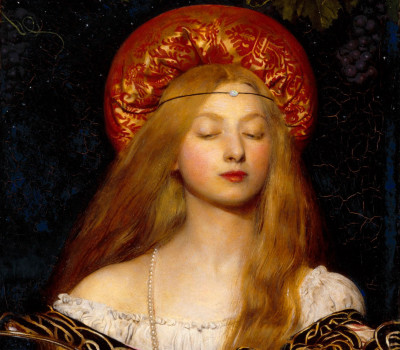How to read it: Frank Bowling’s Wintergreens
How to read it: Frank Bowling’s Wintergreens
By RA Collections team
Published 13 April 2018
Vast and dense, Frank Bowling’s monumental Wintergreens is one of the modern masterpieces in the RA collection. It is currently on display in ‘Mappa Mundi’, a large retrospective of his work at the Sharjah Art Foundation.
-
-

Is it a landscape?
In a way. Wintergreens is an abstract painting, but it has the colours and textures of winter vegetation. The title reinforces the connection: wintergreens, or evergreens, are plants that keep their leaves throughout winter. It might remind you of woodland, algae or murky water – Tate curator Zoe Whitley has likened it to “a network of bamboo, reeds, and cattails in a stagnant pond”.
Water is particularly important in Frank Bowling’s work. This painting was made in 1986, the year he moved to a studio in with a view of the Thames in Limehouse, London. Bowling has referred to London as “Turner’s town” and the scale of Wintergreens has attracted comparisons with the ambitious landscapes of past RAs such as Turner and Constable.
How was it painted?
Strips of acrylic foam (a material used in commercial packing) were attached to the canvas, creating a gridlike structure onto which Bowling applied thick layers of paint and translucent acrylic gel. This weighed down the foam, pulling it into new shapes. Bowling then created a new substance by mixing gel and pigment, which he applied in thick layers with a spatula. The quick-drying properties of acrylic paint (as opposed to oil) allowed him to quickly pile layer upon layer of paint. In amongst the paint Bowling nested an assortment of unusual objects, including the cap of a film canister and even a plastic toy owl, adding a humorous edge to the work. If you look very closely at the centre of the detail pictured, you might be able to see the owl peeking out from the paint.
-
-
Why did he work this way?
Bowling began his career as a figurative painter, but moved towards abstraction after moving from Britain to New York in 1966. His work challenges and expands ideas of painting; for a time in the 1970s he abandoned easel painting altogether, instead pouring paint directly onto canvases stretched out on the floor. The use of foam strips and thick blobs of paint in works such as Wintergreens turns the canvas into a three-dimensional object, extending out from the wall and towards the viewer like a sculpture.
Wintergreens has been made by adding layer upon layer of material, unlike working with a predetermined figurative image. In this painting and others, Bowling is exploring the complexity of the world rather than reducing it to legible images. The crusted, swamplike texture of the painting seems to challenge the possibility of seeing clearly altogether. The curator of Bowling’s Mappa Mundi exhibition Okwui Enwezor has written that Wintergreens provides a “deeply sceptical vision” of the sublime, far removed from the vastness and grandeur of artists such as Turner.
Who is Frank Bowling?
Now a senior Royal Academician, Frank Bowling has played a major role in abstract art since the 1960s. Born in what was then British Guiana, Bowling came to Britain in 1953 and won a scholarship to the Royal College of Art six years later. Since the 1960s Bowling has divided his time between London and New York. He has only rarely returned to his birthplace, although it is often referenced in his works, including his hometown of Bartica and even photographs of his mother’s house.
In 2005 Bowling made history by becoming the first black artist to be elected to the Royal Academy of Arts. Speaking to the RA nine years later, he said he was “overjoyed… the RA means an awful lot of things to me.”
Wintergreens has been exhibited extensively, including in the seminal exhibition The Other Story, the Hayward Gallery’s 1989 attempt to redress the lack of recognition of African, Caribbean and Asian artists in postwar Britain. Frank Bowling was awarded the OBE in 2008. The Irish Museum of Modern Art’s major retrospective of his work is on until 8 July 2018.
-

Frank Bowling RA , Wintergreens , 1986 .
Acrylic on canvas. 1740 x 3480 x 100 mm. Photo: RA/John Hammond © Royal Academy of Arts, London.
-
-

10 art shows to see in April
Take a trip through the major artistic movements of the past 100 years in this month’s top picks, from turn-of-the-century Impressionism and Glasgow Style to contemporary photojournalism and abstract painting.
-






